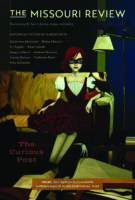Foreword | June 19, 2020
Foreword: Elemental Force
Speer Morgan
I happen to have discovered a direct relation between magnetism and light, also electricity and light, and the field it opens is so large and I think rich.
—Letter to Christian Schönbein (13 Nov 1845), The Letters of Faraday and Schönbein, 1836-1862
Michael Faraday’s note to his friend Schönbein describing what he was learning about magnetism, electricity, and light was understated, considering that he had just helped crack open the door of what would become modern hard science. James Clark Maxwell’s book about the interconnectivity of light, electricity, and magnetism, published twenty years later, had an influence as profound as Newton’s Laws. In providing the “second great unification in physics,” Faraday and Maxwell ushered in twentieth-century science to a degree that Einstein said, “I stand on the shoulders of Maxwell.”
Elemental forces are as present in the arts as in the sciences. Attraction and repulsion, positive and negative, illumination and darkness, disruption and symmetry are pervasive in both the methods and substance of art. Like alternating current and atomic structure, literature offers protagonists and antagonists, stasis and movement, magnetic and repellent characters, light and dark tones, every emotion and its opposite.
If you are a student, faculty member, or staff member at an institution whose library subscribes to Project Muse, you can read this piece and the full archives of the Missouri Review for free. Check this list to see if your library is a Project Muse subscriber.
Want to read more?
Subscribe TodaySEE THE ISSUE
SUGGESTED CONTENT

Features
Jan 08 2024
Foreword: Family Affairs
Family Affairs During the nineteenth century, observers from both sides of the Atlantic admired the relative looseness of American families while also criticizing a lack of multigenerational connectivity and… read more

Features
Dec 19 2023
Foreword: The Curious Past
The Curious Past The past is such a curious creature, To look her in the face A transport may reward us, Or a disgrace. – Emily Dickinson Jonathan Rosen’s… read more

Features
Jul 27 2023
Foreword: The New Realism
The New Realism I sometimes wonder what the dominant trend in literature is going to be called. Names for artistic periods and movements are hardly definitive, but they are useful… read more

